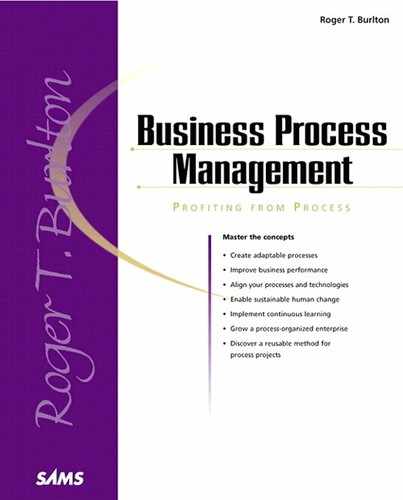Process Management Comes of Age
The time for process management is unquestionably upon us. It might not be discussed with fad-like hysterics as it was in the early 1990s when Michael Hammer and James Champy wrote the book about business process re-engineering that got a lot of people’s attention.[1] However, many organizations are finally starting to understand its value.
[1] Reengineering the Corporation: A Manifesto for Business Revolution, Michael Hammer & James Champy, HarperCollins, 1993
My seminars in practical Business Process Management (BPM) started in 1990—a couple of years before Hammer and Champy published their book. These seminars have been well attended ever since. There have been peaks and valleys in attendance as the subject has matured. From 1990 to 1994, everyone was curious and just wanted to educate himself on what the terms meant. From 1994 to 1997, attendees came looking to try it out for themselves. Many of them still struggled since they were really searching for a silver-bullet solution to all the problems that they had, which weren’t solved by their previous attempts at silver-bullet solutions. For some of them, the hard work part of the process management message didn’t sink in. They also didn’t want hear that it would be complex and involve significant human change. The published materials at the time didn’t tell them that. For this reason, around the mid-’90s, survey after survey reported that two-thirds of the re-engineering attempts failed to deliver anticipated or promised results. The word on the street was that process re-engineering was dead. This was reflected in a dip in seminar attendance below earlier numbers. It seemed the fad would pass.
From 1997 to 1999, in many organizations, attention was drawn away from enterprise processes by the very expensive and resource-hungry year 2000 software crisis. Many enterprises did little in the way of process renewal during this time because they couldn’t afford to. The fad seekers, moreover, had moved on to something else. For some, it was Internet technology, enterprise resource planning (ERP), sales force automation, supply-chain management, data warehousing with business intelligence, or knowledge management. But, by the late ‘90s, organizations had also discovered, as they did with prior fads, that these also weren’t simple solutions and certainly not just about technology.
I found myself preaching to organizations that issues such as knowledge management aren’t centered on information technology (IT). I also reminded them that their focus must be on their business processes and the changes required of people such as changes in beliefs, behavior, incentives, roles, jobs, culture, and structure. From 1997 onward, new or emergent ideas such as ERP, customer relationship management (CRM), business-to-consumer (B2C) e-business, and business-to-business (B2B) e-business all demanded complete end-to-end process design and management to be effective.
By the time the year 2000 crisis came and went, it was clear that the focus had returned to business process, but in a less flamboyant way. In 1993, Hammer and Champy missed the mark with their fiery message of radical redesign at all costs. However, what they got right was the enduring message of the importance of processes. Today, I can safely say that Business Process Management isn’t a fad—it is here to stay. It’s a new fundamental management requirement through which enterprises can run their organizations to survive and thrive.
The challenge today is to use business processes as reusable enterprise assets that align the complex set of other enterprise assets. People, technologies, facilities, information, and knowledge must be synchronized and work in harmony through processes to support the enterprise outcomes that deliver value to the organization’s stakeholders. Managing the performance of the processes and the ever-changing alignment among other enterprise assets is now the challenge du jour. Organizations are figuring out the importance of business process management (BPM), as witnessed by the growth in conferences dealing with enterprise architecture and Process Renewal Group’s Business Process Management seminars. Attendance at these events, I am happy to say, is the highest it has ever been, even outperforming the heydays of business process re-engineering (BPR). Business Process Management is here to stay.
It’s my mission to help organizations truly understand how to succeed with BPM. I hope this book will help you strive toward your mission. For many of you, it will guide your actions well. Unfortunately, for others, managing business processes and enterprise change will be seen as too hard to do and too much work. It has been my experience that companies which are serious about solving problems and providing great results for external stakeholders find the methods very valuable and worth the effort. For those looking for a quick fix, those that are internally focused or looking for a simple way to implement technology without commitment to business issues first, this book will either change your mind or disappoint you. I hope it is the former.
